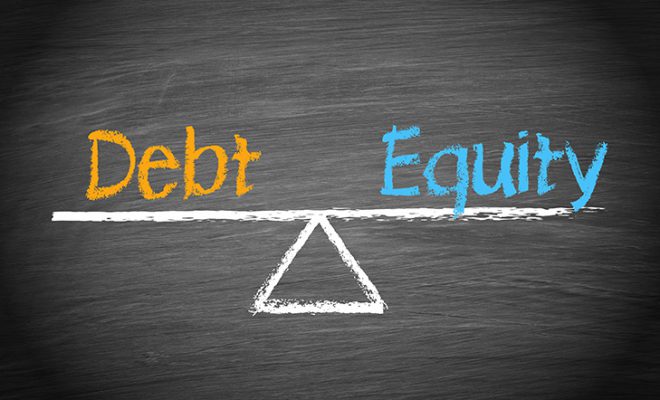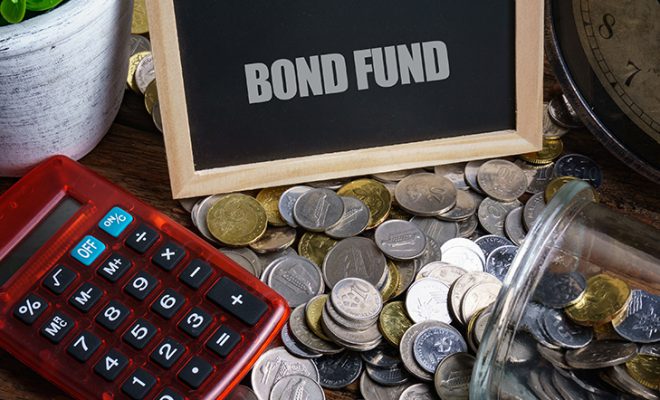8 Questions to Ask Your Financial Advisor About Your Investment Portfolio

Hiring a financial advisor can be an excellent step towards building your financial future. They can help guide you in managing your finances and in avoiding costly financial mistakes in the long run. However, engaging in open and insightful conversations with your financial advisor is important to ensure you understand your portfolio well and can make informed decisions. Having a proactive approach can help you navigate the intricacies of investing and have a deeper understanding of your portfolio. You can do this by asking pertinent questions during your discussions with your advisors. A financial advisor can help you understand how to start a financial portfolio. However, remember to ask the right questions along the way to ensure you’re making the best of your client-advisor relationship. The questions you ask your financial advisor should cover various aspects of your portfolio, such as fees, taxes, risk, and others.
Table of Contents
Questions to ask a financial advisor about your portfolio
Here are eight questions to ask a financial advisor about investing, portfolio strategies, risk, taxes, and other critical aspects of financial planning:
1. What is the objective and strategy of my investment portfolio?
Every investor has a distinct financial goal and objective for investing. It is essential for your investment portfolio to align with your unique financial goals, risk tolerance, and time horizon. Therefore, one of the first things to ask a financial advisor should be if your investment portfolio reflects your needs. Your investment portfolio should be tailored to your specific financial goals. For instance, if your goal is wealth accumulation, the financial advisor may recommend different strategies versus if your goal is wealth preservation. Similarly, the professional may advise investing in different instruments for goals such as retirement planning, funding your children’s education expenses, buying a home, or other objectives. Your portfolio’s strategies should be designed to provide growth, income, preservation, or a combination of all of these, depending on your objectives.
The time horizon of your investment goals will also influence your investment strategy. Longer-term goals may allow for a more aggressive approach with potentially higher returns, while shorter-term goals may require a more conservative strategy to preserve capital. Similarly, your investment preferences will also determine your investing style. You may choose between active and passive management. With active management, the portfolio will be actively monitored and adjusted based on market conditions and investment opportunities. Alternatively, with passive management, the financial advisor may suggest investing in index funds that aim to replicate the performance of a specific market index.
2. What rate of return should I aim for to live a financially secured retirement?
Retirement income comes from a limited pool of sources. Your investment returns, distributions from retirement and pension accounts, Social Security benefits, dividend payments, etc., account for your retirement income. It is vital to ensure that these sources suffice for your golden years and offer adequate income for life. Hence, one of the most important questions to ask your financial advisor about your portfolio is about the rate of return you need to ensure your money will last in retirement. You can start by discussing your anticipated retirement expenses, such as housing, healthcare, food, travel, hobbies, entertainment, etc. It is essential to help your financial advisor understand your spending needs so they can gauge the income required from your investments. Next, you must talk about your present savings. This can include your 401(k)s, Individual Retirement Accounts (IRAs), stocks, mutual funds, index funds, etc. Based on these, the financial advisor can instruct you on how much more you need to save and the rate of return you must aim for to bridge the gap in your savings and goals. It is also important to take inflation into consideration and ask the financial advisor to account for it when suggesting investments.
3. What fees and expenses am I paying for managing my investments?
It is essential to have a comprehensive understanding of the fees and expenses you incur for managing your investments. Investments have different costs associated with them, ranging from management fees, administration fees, expense ratios, upfront or one-time fees involved when setting up an account, transaction costs associated with buying or selling securities in your portfolio, and others. For instance, certain types of investments, like individual stocks or bonds, may incur transaction fees or commissions each time you buy or sell them. The custodian may charge annual account maintenance fees if your investments are held in a retirement account, such as an IRA or a 401(k). These fees cover administrative services and can vary between custodians.
If you work with a financial advisor who provides comprehensive financial planning services, they may charge a separate fee for their advice and expertise. This fee structure can be based on a percentage of your AUM or a flat fee. In some cases, the financial advisor may also charge performance-based fees, calculated as a percentage of the investment gains achieved above a specified benchmark or threshold. Understanding these at the beginning of your professional association with the financial advisor is essential.
4. What should my investment portfolio look like?
A well-designed investment portfolio typically should be optimally diversified. This refers to spreading your investments across different asset classes, such as stocks, bonds, Exchange-Traded Funds (ETFs), alternative investments, gold, real estate, commodities, currencies, etc., and across industries and geographic regions. Diversification can minimize risk by reducing the impact of any single investment on the overall portfolio’s performance. However, the allocation should be based on your risk tolerance, financial goals, and time horizon. For instance, if you are young and have a high-risk appetite, your portfolio could have more stocks, currencies, and commodities. However, if you are approaching retirement, you can invest more in bonds, money market accounts, and certificates of deposits to lower risk and focus on wealth preservation. Higher-risk investments like stocks have the potential for greater returns but also come with increased volatility. Bonds and cash are generally considered lower-risk, providing stability and regular income.
You must discuss what your investment portfolio should look like at every phase of your life to ensure your evolving financial goals, risk appetite, and time horizons are rightly echoed in your portfolio.
5. Are there any tax implications associated with my investments?
It is important to know the taxes associated with each of your investments. This can help you select tax-efficient investments, take advantage of tax benefits, and plan your contributions and distributions. For instance, the 401(k) and IRA are two tax-advantaged accounts popularly used for retirement savings. You can choose between the Roth and Traditional variants. Contributions to a Roth account are made with after-tax money, and qualified withdrawals in retirement are tax-free. Roth accounts also do not have Required Minimum Distributions (RMDs). Traditional accounts, on the other hand, offer tax-deductible contributions in the year they are made, reducing your taxable income for that year. Withdrawals from a Traditional account are taxed as ordinary income in retirement. Traditional accounts require RMDs starting at age 73, as of 2023. The amount you must withdraw annually is based on your age and account balance. You must ask your financial advisor about these tax differences so you can make an informed choice about the two.
There are several other taxes that you may be subjected to. For example, when you sell an investment that has increased in value and earned a profit, you may be subject to capital gains tax. The tax rate depends on how long you hold the investment. If you receive dividends from your investments, they may be subject to taxes. Upon your passing, your assets and overall estate may be subject to estate taxes, depending on the value of your estate and applicable tax laws.
You can also use your losses to save tax. If you incur losses on certain investments, you may be able to use those losses to offset capital gains. This strategy, known as tax-loss harvesting, can help reduce your overall tax liability. You must make a list of such tax-related questions to ask your financial advisor during the annual review so you can efficiently plan your tax payments for the financial year.
6. How does the current economic and market conditions impact my investments?
A variety of different factors may impact your investment portfolio. Economic policies, new laws and acts, market conditions, etc., can directly affect your investments. It is important to ask your financial advisor about the impact of these. Factors such as geopolitical events, interest rate fluctuations, and investor sentiment can lead to changes in stock prices, bond yields, and other investment values. Market volatility can affect the short-term performance of your investments and may require adjustments to your investment strategy. Different economic and market conditions can impact asset classes and sectors differently. For example, consumer goods tend to do well even during market downturns. Sectors like technology may do well during periods of economic expansion. Understanding how different asset classes and sectors are affected by different economic conditions can help you make informed investment decisions.
Changes in interest rates can also have a significant impact on investments like bonds. Rising interest rates may negatively affect bond prices and vice versa. Your portfolio can also be impacted by inflation. Investments that historically provide a hedge against inflation, such as certain stocks, real estate, or commodities, may be more favorable during periods of higher inflation. It is also essential to keep an eye on global economic trends and geopolitical developments like wars, natural disasters, etc., that can turn into potential risks and opportunities for your portfolio.
Another important question to ask your financial advisor about your portfolio is whether or not it can be impacted by any recent changes in laws. For example, with the SECURE Act 2.0, there have been many alterations to retirement accounts with respect to distribution rules, penalties, catch-up contributions, and more. Understanding how these impact you is essential to plan and prepare for your retirement efficiently.
7. How should I withdraw my investments?
Determining a withdrawal or distribution strategy from your investment portfolio is essential for managing your retirement income. The right approach for you will depend on several factors, including your financial goals, lifestyle needs, tax implications, and the composition of your investment portfolio. This can be confusing to determine, and it is important to select a percentage for withdrawal that ensures you do not outlive your money. A financial advisor can help you choose the right distribution strategy based on your goals, but it is vital for you to discuss all your options at length with a professional first.
If you have Traditional IRAs or employer-sponsored 401(k) retirement plans, you will need to take RMDs. The value of your RMD will determine the tax you pay on them. RMDs are calculated based on your account balance and life expectancy and must be withdrawn annually. Failing to take RMDs or taking less than the required amount may result in penalties. You would also have to consider the tax implications of your withdrawals. Managing the timing and amounts of your withdrawals strategically can help you minimize your tax liability. For example, withdrawing from taxable accounts first and allowing tax-advantaged accounts like Roth IRAs to continue growing tax-free can be a tax-efficient approach.
You can also follow a fixed percentage withdrawal, where you withdraw a fixed percentage of your investment portfolio each year. For example, you may withdraw 4% of your portfolio annually. This way, you will have a consistent income stream. You can ask your financial advisor for the best-suited approach for your needs and requirements and select an option that caters to your purpose.
8. What happens to my investment portfolio during market downturns or economic crises?
Different types of investments can react differently to market downturns or economic crises. For example, stock prices can experience sharp declines during market downturns. In contrast, bonds are generally considered safer investments compared to stocks. However, this does not make them immune to market downturns. They can still be influenced by market conditions. The value of mutual funds and ETFs can also decline during market downturns due to the performance of the underlying assets. Real estate investments, including residential, commercial, or Real Estate Investment Trusts (REITs), can be impacted during economic crises. Property values may decline, rental income may decrease, and property sales may slow down.
It is important to note that while investments can be affected during market downturns or economic crises, these events are typically part of the market cycle. Historically, markets have recovered over time, and diversified portfolios have shown resilience and the potential for long-term growth. Staying focused on your investment goals, maintaining a diversified portfolio, and avoiding hasty reactions based on short-term market movements are essential for navigating challenging times. Nevertheless, you must discuss the outcome of such events on your investment portfolio to mentally prepare yourself.
To conclude
These eight financial advisor questions can serve as a starting point in your professional association. They can help you understand your portfolio better and allow you to gain insight into your financial advisor’s way of working. Asking these questions will enable you to understand the investment strategy being employed, asset allocation, historical performance, fees and expenses, tax implications, and risk management. These factors can contribute to better decision-making and peace of mind in adverse situations.
You can use WiserAdvisor’s free advisor match service to find an experienced financial advisor in your area. All you have to do is answer a few simple questions based on your financial needs, and the match tool will help connect you with 1-3 advisors best suited to meet your financial requirements.



















